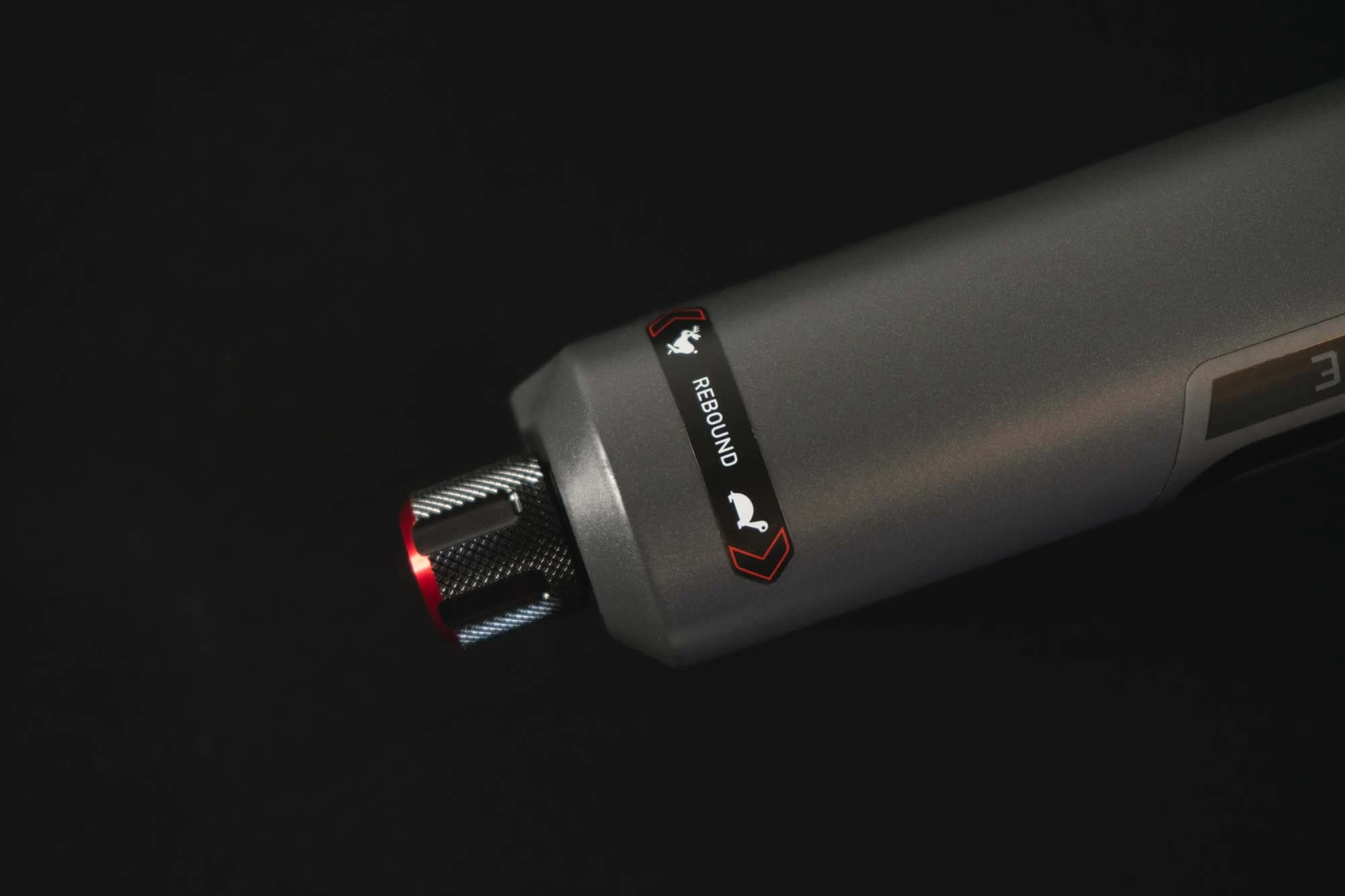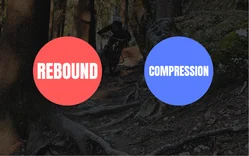
KNOW-HOW on Rebound setting for your MTB
Rebound setting MTB is an important aspect of a mountain bike’s suspension system that allows riders to fine-tune the performance of their bike for different terrain and riding styles. In this blog post, we’ll take a closer look at what rebound is, how to adjust it, and the effects it has on a mountain bike’s performance.
Rebound is usually a red dial or lever. It occurs as the spring forces the shock, or fork, to extend.

Here an explanation of rebound?
To understand rebound, it’s important to first understand how suspension works on a mountain bike. The suspension system consists of a series of springs and dampers that absorb the impact of bumps and obstacles. As a result this helps to smooth out the ride and make it more comfortable for the rider. However, if the suspension rebounds too quickly, it can cause the bike to lose traction and become unstable. This can also lead to a crash.
Moreover there are several ways to prevent rebound on a mountain bike. One of the most effective is to adjust the rebound damping on the bike’s suspension. Most modern mountain bikes have adjustable rebound damping, which allows the rider to fine-tune the suspension. The fine tuning can be based on your preferences and the trail conditions. By turning the rebound damping clockwise, the suspension will rebound more slowly.
A too slow or too fast rebound setting MTB
If you set rebound setting MTB too slow, the suspension will take too long to return to its original position. This can can cause the bike to feel sluggish and unresponsive. On the other hand, if you set the rebound too fast, the suspension will return to its original position too quickly. This can cause the bike to feel bouncy and unstable.
How to adjust the rebound setting
To adjust the rebound setting MTB on your mountain bike, you’ll need to locate the dial or lever. This is typically located near the bottom of the fork on the front suspension. But it can also be near the rear shock on the rear suspension. Once you’ve found the adjustment dial or lever, you can turn it clockwise to decrease the rebound speed. Furthermore if you turn the knob counterclockwise it will increase the rebound speed.
Rebound CHEAT SHEET
The faster, the better – If you ride a lot in moderate terrain or ride more leisurely, a slower rebound stage will initially seem more comfortable to you. However, if you move in faster terrain then a slower rebound stage leads to painful arms and legs, as your bike cannot recover from the bumps quickly enough and thus “wastes” travel. Ride for maximum performance with as fast a rebound adjustment as is just comfortable.
TIP concerning your rebound
Important to remember as well that high speed, and low speed, relates to shock shaft speed not bike speed!
Do not settle – Keep tuning your rebound setting MTB
It’s important to experiment with different rebound settings MTB to find the one that works best for your riding style. Also the the type of terrain you’re riding on should play a role. A good starting point is to set the rebound to the middle of its range, and then make small adjustments from there until you find a setting that feels comfortable and allows you to maintain good control of the bike.
SAGLY – a mobile application which is a complete mobile guide for your mountain bike suspension and maintenance, also gives you tips how to adjust your rebound settings, what effects which changes have and so on.
Download SAGLY, a complete mobile guide, which helps you set up your MTB settings and maintain your bike.

